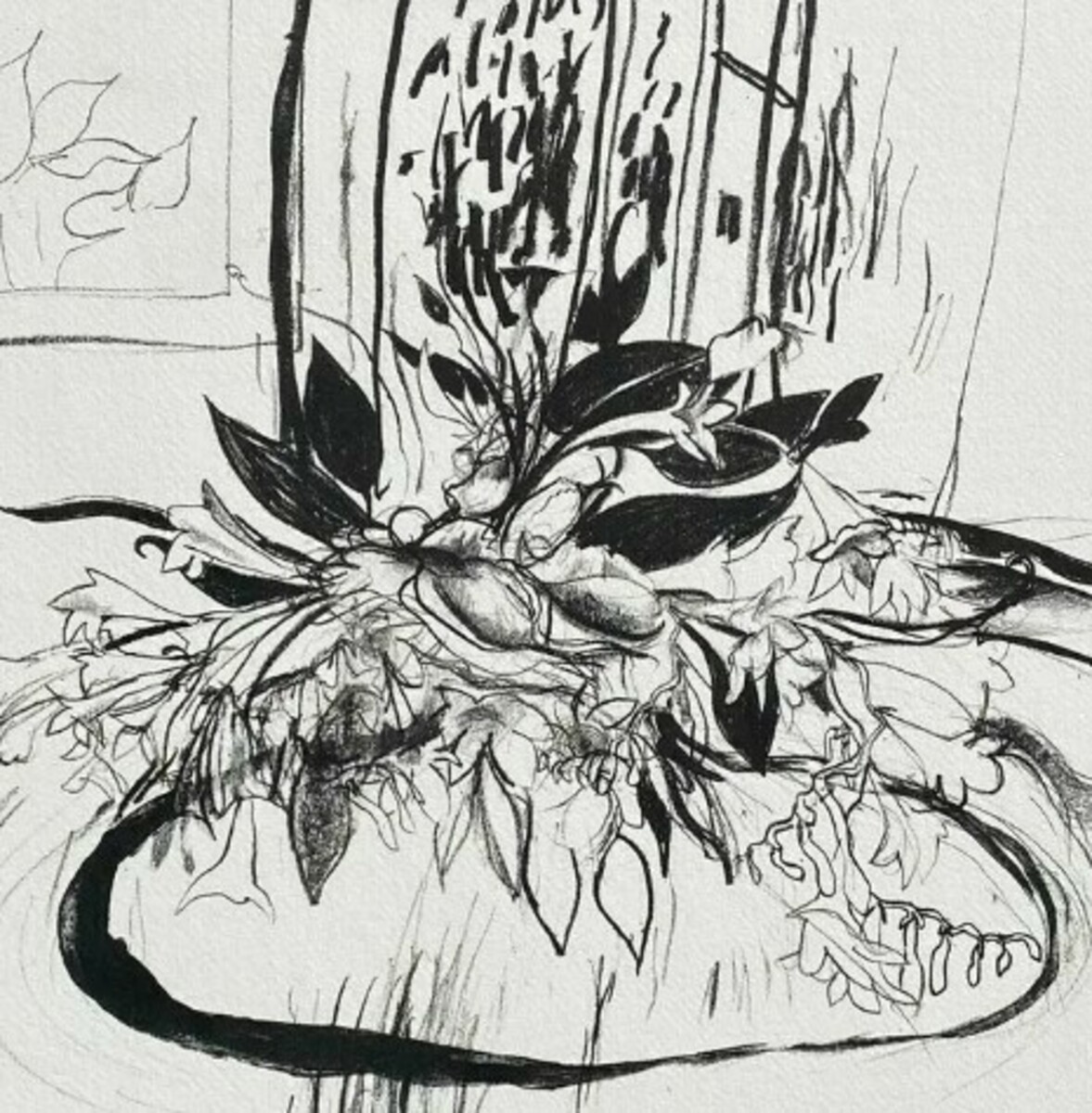
Brett Whiteley
Biography
Brett Whiteley was born in Sydney, New South Wales in 1939 and was known as a painter, draughtsman, printmaker and sculptor.
Whiteley studied at the Julian Ashton School in Sydney from 1957 to 1959 under Paul Delprat and then in 1960 he won the Italian Travelling Scholarship which took him to London and Paris to study. While he lived and worked overseas he was influenced by the Symbolist poets. This, combined with his great natural talent for drawing, his lack of inhibitions and taste for exotic influences, such as that of the English artist Frances Bacon, made Whiteley, the young 21 year old painter, an exciting prospect for London art dealers.
It is interesting to note how Whiteley's lifestyle integrated with his art. Many poets and writers were acknowledged by Whitely as his influences, making a significant contribution to his work. Works by writers and artists such as Verlaine, Rombaud, Pascin, Francis Bacon and Yves Klein (whose intense and tragic way of life, so strangely symbolised in his obsession with the colours of blue and gold) were clearly echoed in Whiteley's work.
Nearly all of Whiteley's mentors seemed to have early in their careers embarked on elaborate courses of self-destruction, as if this were the natural for achieving ultimate self-expression. The whole pattern of Whiteley's life was therefore written into his drawing and painting - its scintillating brilliance, its ecstasy, and its foreboding.
A year after arriving in London, Brett Whiteley's work was shown at the Whitechapel and Marlborough galleries in 1961. In that same year he was also selected to represent Australia at the Young Painters' Convention, UNESCO, in Paris. Another event crucial to his success was the fame generated from his winning the international prize at the second Biennale de Paris (International Biennale for Young Artists), which bought with it the excitement, glamour and disadvantages of world publicity.
After 1961 Whiteley returned to Australia where he showed his work. He then lived overseas again in Europe and continued his travels, visiting the USA in 1968 and living in Fiji in 1969. He also travelled to Asian countries and what he learned from his contact with countries such as Cambodia, Vietnam and Japan is expressed in his drawings and paintings, and even more so in sculptures. In Fiji Whiteley began to produce sculptures where he incorporated "found objects" often including bird and animal remains as metaphors for the destructiveness of industrial society - he first exhibited these in 1968. Later in his life in 1988 and 1989 he travelled again to Paris and North Africa.
Whiteley returned to Sydney in 1970 to live. During the 1970's he won a number of national prizes and settled at Lavender Bay in Sydney, where he produced his sensuous lavender-blue paintings of Sydney Harbour, summing up the rare chords of ecstasy that sustained his spirit. Apart from interiors, Whiteley's subjects also included nudes, ironic landscape, animals and birds, portraiture and apocalyptic fantasy. His work also showed a response to current issues such as the Vietnam War, destruction of the environment and commercial culture, where he often deliberately violated conventional attitudes, especially through his use of overt eroticism. To all of his works, Whiteley brought a prodigious draughtsmanship and a bold informality of composition.
During his life, Whiteley remained prolific, despite the desperate struggle his life had become - with drugs, alcohol and personal trauma including divorce from his wife and close companion, Wendy. Brett Whitely died in 1992 at Thirroul, New South Wales in a motel room on the New South Wales coast. The coroner's verdict was "death due to self-administered substances". His death was believed to be a tragic accident as his spirit and health had improved markedly in the months before his death. A memorial service was held for him at the Art Gallery of New South Wales.
Brett Whiteley was awarded several prestigious art prizes during his life, including the Bathurst prize (for young artists) in 1956; Italian Travelling Scholarship in 1960; Commonwealth Art Advisory Board Scholarship, Dyason Grant in 1961 and the international prize, Biennale de Paris also in 1961; T. E. Wardle International Art Prize, Perth in 1965; Harkness Foundation Scholarship in 1967; Sir William Angliss Memorial Prize in 1975; Archibald & Sulman Prizes in 1976, plus McCaughey prize, Sydney; Wynne Prize in 1977; Archibald, Sulman and Wynne Prizes in 1978.
Brett Whiteley's work is represented at the National Gallery of Australia, the Art Gallery of New South Wales, the Art Gallery of South Australia, the Art Gallery of Western Australia, Museums & Art Galleries of the Northern Territory, National Gallery of Victoria, the Queensland Art Gallery, the Queen Victoria Art Gallery & Museum, Tasmanian Museum & Art Gallery and many regional galleries in Australia. His work is also represented internationally at the Tate Gallery in London, the Victoria & Albert Museum in London and the Museum of Modern Art in New York. Brett Whiteley's work is also represented in many corporate, institutional and private collections in Australia, the United Kingdom, Europe, the United States of America, Japan and New Zealand.
Bibliography:
Encyclopedia of Australian Art, McCulloch, Hutchinson 1968; Australian Paintings, Bernard Smith, Oxford University Press 1971; The Australian Landscape and its Artists, Elwyn Lynn, Bay Books, Sydney 1977; Australian Sculptors, Ken Scarlett, Nelson 1980; Concise Dictionary of Australian Artists, Robb & Smith, Melbourne University Press, 1993; Brett Whitely - The Graphics 1961-1992, Deutscher Fine Art, Melbourne, 1995.
Publications:
Another Way of Looking at Vincent van Gogh, Brett Whiteley, Richard Griffin 1983.
Showing the single artwork
